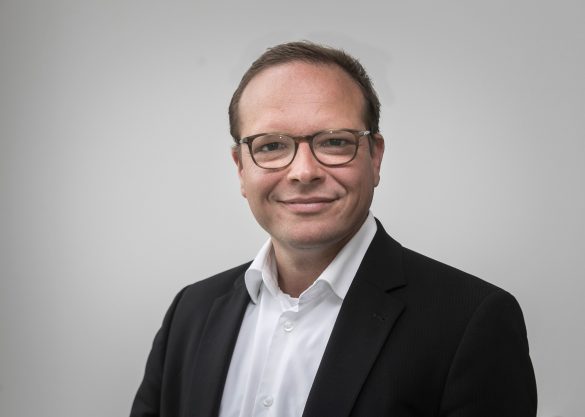With an innovative tender, the Braunschweig Hospital attracted a great deal of attention and sent a clear signal regarding the direction of its digital future. The German academic teaching hospital was looking for a partner that could combine all of its existing picture archiving and communication systems (PACS) into one. What was special about the hospital’s tender, however, was the requirement that not only the employees but also the patients themselves should be able to access patient data and documentation. The vendors participating in the tender, therefore, had to consider how the “hospital of the future” would communicate with its patients. In the end, Sectra won the tender together with a subcontractor.
We needed a system in which every authorized person could find all necessary documents and medical images. One for all, so to speak.
With a maximum care capacity of 1,500 beds and an IT infrastructure that had grown complex over time, the Braunschweig Hospital was faced with six separate PACS from different vendors. “The complexity of our IT infrastructure urgently needed to be reduced and the process within the hospital simplified,” says Dr. Raimar Goldschmidt, Chief Digital Officer at the Braunschweig Hospital and Chief Executive Officer of the hospital’s innovation center skbs.digital. “We needed a system in which every authorized person could find all necessary documents and medical images. One for all, so to speak. All imaging data needed to be stored in a platform that users could access via a wide variety of systems.”
The vendor-neutral archive Sectra VNA was the solution. Sectra has supplied the hospital with one of its six PACS since 2003 and therefore knows its structures very well. Instead of completely replacing the previous structure, a modular extension was created from the existing system in order to consolidate the six systems into one VNA.
The Braunschweig Hospital will be able to access and process all medical multimedia via a single central archive based on international standards. Medical images, videos, audio clips, and documents from the existing document management system can be integrated into the VNA from practically any source—including all types of DICOM images, ECG, HD film, and non-DICOM images. The storage of the data follows the clinical path of the patient, so that the treating physicians can find and edit all information pertaining to the patient—from anywhere, at any time, and on any device. This is largely made possible with the enterprise viewer Sectra UniView, which the hospital has purchased in addition to the VNA.
Babybauch app: digital exchange with parents-to-be
One of the hospital’s central ideas—to give patients access to their data and documents—is now being realized through the innovative Babybauch (“Baby Bump”) app. Parents-to-be in the Braunschweig region will receive information about pregnancy and childbirth via the app and, in the future, will be able to book childbirth preparation courses, make appointments for a tour of the delivery room, or find a midwife, all with just one click.
But that is not all. Patients will also be able to access their medical records and images. Everything from lab results from previous checkups to 3D images of the baby will be available. All this is possible because the Sectra VNA provides fast and secure access to data through a standardized integration with apps such as Babybauch. If this app is well received by patients, the hospital will expand this type of integration to include other apps, such as those currently used by cardio and diabetes patients in the region.
Cutting-edge training
As part of the implementation of the VNA, Sectra was also able to impress the hospital with its customer training. “E-learning is a very important subject today,” says Dr. Goldschmidt. “Our employees must be able to get the best out of each of our IT systems, and this requires adequate training.” However, training courses offered at a fixed time at a specific location are quickly becoming a thing of the past, not only due to the COVID-19 pandemic, but also to stressful everyday hospital routines. This is why Sectra’s training courses can be completed online on any device, regardless of location.
For Dr. Goldschmidt, the introduction of the Sectra VNA is the first step towards digitizing the Braunschweig Hospital, with more steps to follow. In the medium term, the CDO wants to digitize the pathology department. With a modern digital pathology system, pathology images could also be stored in the VNA and accessed by all authorized employees using the enterprise viewer.

Dr. Raimar Goldschmidt has been CDO at the Braunschweig Hospital and CEO of the hospital’s innovation center skbs.digital since 2017. He studied computer science in Ulm and medicine in Heidelberg, both located in Germany.
Featured products & services
Related cases




